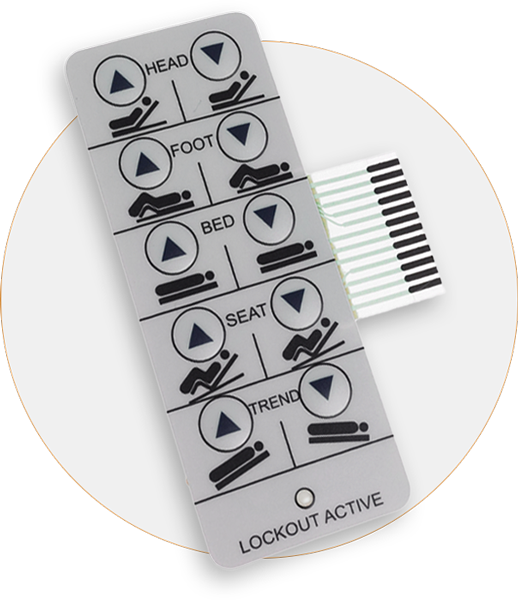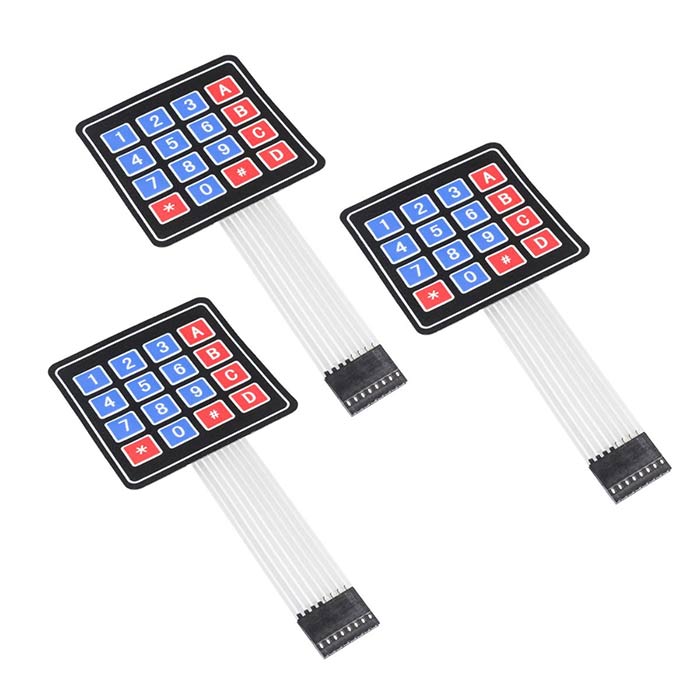You’ll experience the difference when partnering with a high-quality membrane switch manufacturer.
All Concerning Membrane Layer Switch: Comprehending Its Design and Functionality
When you consider the control user interfaces in contemporary devices, membrane switches frequently enter your mind. These elements are greater than just switches; they blend style and capability flawlessly. Comprehending just how they function and what makes them reliable can change your viewpoint on everyday electronic devices. There are nuances to their style and performance that you may not be mindful of. Let's discover what sets membrane changes besides various other control systems.
What Are Membrane Layer Switches?

Their seamless nature makes them easy to tidy and resistant to dust and moisture, an essential function in many settings. Membrane buttons can likewise be personalized regarding form, size, and graphics, allowing manufacturers to create distinct user interfaces customized to certain items. And also, they're lightweight and thin, which aids in minimizing the general bulk of gadgets. On the whole, membrane switches play a substantial duty in boosting customer experience throughout a large range of applications.
Exactly How Membrane Changes Job
When you press a secret on a membrane layer switch, it triggers an uncomplicated yet efficient mechanism. The top layer, often made of versatile material, presses down onto a conductive layer beneath it. This activity bridges the space between conductive traces, finishing an electric circuit. As quickly as the circuit closes, it sends out a signal to the device's controller, which translates your input.
You'll notice that the tactile responses differs based on the button design, using either a soft click or an extra pronounced reaction. When you release the trick, the membrane layer go back to its original position, resuming the circuit and stopping the signal. This procedure occurs almost instantly, guaranteeing a responsive customer experience.
Membrane layer switches are popular as a result of their longevity and resistance to dust and dampness, making them perfect for different applications, from home appliances to clinical gadgets. Understanding this operation helps you value their extensive usage.
Trick Elements of Membrane Layer Switches
Understanding the key components of membrane layer switches is basic for understanding their capability and style. At the core, you'll find the visuals overlay, which offers the aesthetic interface for users. Underneath that, there's a spacer layer that divides the circuit layers, guaranteeing that they don't make contact until pushed. The circuit layer is where the magic happens; it contains conductive traces that finish the circuit when you press the button. An additional crucial component is the glue support, enabling the button to stick to surfaces firmly. Finally, the protective layer shields against environmental elements and wear, extending the switch's life expectancy. Each component plays a significant duty in ensuring reputable performance and individual communication. By understanding these components, you'll get insight into exactly how membrane layer changes run and their importance in various applications.
Materials Used in Membrane Layer Switch Style
The efficiency and resilience of membrane changes greatly depend upon the products utilized in their layout. You generally run into polyester and polycarbonate as primary substratums due to their superb stamina and adaptability. These products withstand scrapes and chemicals, making them suitable for requiring settings.
The conductive layers frequently make use of silver or carbon, chosen for their basics dependability and conductivity. membrane switch manufacturer. Silver provides premium performance, while carbon is a cost-effective choice. For the overlay, you might take into consideration a matte or shiny surface, depending upon your aesthetic demands and individual experience
Adhesives play a necessary role also; they bond layers securely and guarantee long life. Make sure to choose adhesives that endure environmental elements like temperature level and humidity. Finally, do not overlook the significance of a great printing method for graphics, as it enhances both capability and visual charm. Picking the appropriate products will guarantee your membrane layer button stands the examination of time.
Design Considerations for Membrane Buttons
While making membrane layer buttons, it's essential to take right into account different variables that influence their functionality and customer experience. Start by concentrating on the format and button dimension; make certain they're instinctive and very easy to navigate. Take into consideration the tactile comments you intend to provide-- will customers need a visible click or a softer touch? In addition, believe concerning the products you'll utilize, as they'll impact sturdiness and looks.
Confirm your style fits environmental variables, like dampness or temperature variations, which might influence performance. By meticulously thinking about these browse around this web-site components, you'll produce a membrane switch that improves functionality and contentment.
Applications of Membrane Layer Buttons
Membrane buttons are functional parts located in numerous applications, from industrial equipment to consumer electronic devices. You'll see their impact in devices that need durable user interfaces and in gadgets that take advantage of smooth styles. Comprehending these applications assists you value the capability and functionality of membrane buttons in everyday modern technology.
Industrial Tools Use
When you're looking to boost the performance of industrial tools, membrane switches offer a trustworthy solution that combines resilience with straightforward style. These buttons are ideal for severe settings, supplying resistance to dirt, dampness, and chemicals. Embrace membrane buttons to simplify your operations and boost total efficiency.
Consumer Electronic Devices Integration
In the domain of consumer electronic devices, membrane switches play an essential function in boosting individual communication and gadget functionality. Membrane buttons additionally assure durability and resistance to dirt and moisture, prolonging the life-span of your electronic devices. By picking membrane switches, you boost not just the capability but additionally the style of your gadgets, making everyday communications smooth and satisfying.
Benefits and Drawbacks of Membrane Layer Switches
While membrane layer buttons offer a variety of advantages, they also come with some downsides that you should consider. One significant benefit is their portable style, making them excellent for space-constrained applications.

Membrane buttons can have a much shorter life expectancy contrasted to mechanical buttons, especially under heavy use. They can likewise be much less tactile, which might influence individual comments throughout procedure. Stabilizing these pros and cons will aid you figure out if membrane switches are the best fit for your project.
Regularly Asked Inquiries
Exactly How Lengthy Do Membrane Changes Usually Last?
Membrane layer changes commonly last in between 5 to ten years, depending upon usage and environmental problems. You'll intend to assess factors like wear, direct exposure to moisture, and temperature changes to evaluate their longevity successfully.
Can Membrane Changes Be Custom-made for Certain Styles?
Yes, you can personalize membrane buttons to fit particular styles (membrane switch manufacturer). You'll have the liberty to select colors, forms, and layouts that match your task's requirements, guaranteeing they mix perfectly with your total visual
What Is the Price Range for Membrane Change Manufacturing?
The expense variety for membrane layer button production normally falls between $1 and $10 each, depending upon aspects like design intricacy, amount, and materials. news You can get quotes from makers to discover the most effective option.

Are Membrane Layer Switches Over Waterproof or Resistant?
Membrane switches can be developed to be waterproof or resistant, depending on materials used and building approaches. If you need them for damp settings, assure you specify those needs during the layout process.
Just How Do Membrane Switches Over Compare to Standard Switches?
Membrane layer buttons are usually thinner and a lot more flexible than typical buttons, using a smooth design. They're frequently simpler to cleanse and integrate, however may not offer the tactile comments you're made use of to with mechanical choices.
Verdict
